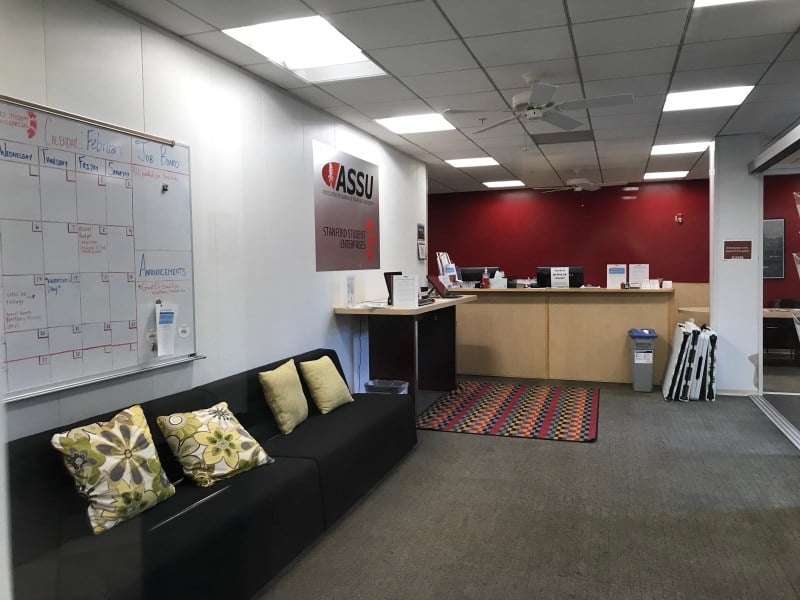With Associated Students of Stanford University (ASSU) elections just over a month away, candidates spent the past week attempting to make it on the ballot. By the end of the petitioning period, 53 out of 54 candidates — all candidates except the Sophomore Class President slate Cedro Corn — had gathered enough signatures. However, their efforts underscored the tension between petitioning to reach the signature threshold and adhering to the ASSU Elections Commissions’ ban on campaigning before spring quarter.
“We just submitted our name for consideration; we did not actively seek out petition signatures,” wrote Cedro Corn in a statement to The Daily. “That’s about all there is to it.”
Petitioning, the process via which candidates attempt to gather enough signatures in order to be placed on the spring elections ballot, ended on Friday. Depending on the office, candidates had to acquire anywhere from zero signatures for the Graduate Student Council to 200 signatures for ASSU Executive.
This year, the Undergraduate Senate piloted a new Qualtrics-based petitioning system, where each eligible voter received a personal link that allowed voters to sign for as many ballots as desired and blocked voters from voting for additional candidates after the form was submitted.
According to ASSU Elections Commissioner Jacob Randolph ’19, the changes are designed to crack down on joke campaigns and signature fraud, in which people ineligible to vote signed candidates’ petitions. Qualtrics will also allow block graduate students and non-Stanford affiliates from petitioning for undergraduate positions.
However, the Qualtrics system also prevented candidates from petitioning after the filing period ended on Feb. 27, a hurdle that was not in place last year.
“The Qualtrics registration system is a barrier to placement on the ballot that was not previously present, and threatens the fairness of the election,” said ex-officio Senator Tim Vrakas ’21 of the new system.
During the petitioning period — and up until election season officially begins on April 1 — candidates are prohibited from campaigning, which the Election Commission defines as “an active, deliberate attempt to engage in electronic or in-person communication that is intended to influence the recipient’s vote.”
However, candidates and slates have already begun posting on Facebook, Instagram and other social media platforms, as well as blasting email listservs and going dorm to dorm asking for signatures. Randolph issued a statement regarding early campaigning to candidates last Monday.
“As long as you are not engaged in deliberately asking for or influencing someone’s vote on the general election ballot, you are not violating campaign regulations,” he wrote. “However, publishing a campaign-specific social media page or event before the campaigning period would fall under deliberate campaigning.”
Candidates interpreted the statement in different ways, leading to contrasting approaches to gathering signatures. ASSU Executive candidates Bryce Tuttle ’20 and Kimiko Hiroto ’20 sent out emails and messages and updated their Facebook profiles to encourage students to sign their petition.
“Mainly, the distinction between campaigning and petitioning is with the campaign you’re actively going out and asking for people’s vote,” Hiroto said. “That’s pretty much the clean and cut rule that you can’t say the words ‘vote for me.’”
Additionally, Natalie Longmire-Kulis ’22, who is running for Sophomore Class President as part of Slate of the Union, reached out for signatures on Facebook, Instagram and Snapchat along with the rest of her running mates. She found using Snapchat stories and asking friends to share the post on their stories to be “really effective.”
Adi Sidapara ‘22, who is also running for Sophomore Class President with his slate The Dream Team, took a different approach to the petitioning period.
“We [thought it was] really important that we [didn’t] misconstrue the petitioning period versus the voting period by doing a full-blown ad campaign,” Sidapara said. “We got all of our support from literally just messaging group chats that we’re a part of. Just our close friends.”
Despite not posting to social media, The Dream Team surpassed its 100 vote threshold on the first day of the petitioning period.
“The thing that I found very excessive was when the other campaigns passed that 100 mark, they were still making social media posts,” Sidapara said. “They didn’t stop, which made it sound like they were campaigning rather than encouraging people to sign their petition. I think that ASSU has to make it clear that you have to be compliant with the spirit of petitioning rather than just the ambiguous language they gave us.”
The Daily has reached out to the Election Commission for comment.
Candidates who acquired the required number of signatures for ballot placement will be able to campaign April 1 through April 9, and eligible students will be able to vote via email on April 10 and April 11.
“Our campaigning strategy is not much different than our petitioning strategy,” said Slate of the Union member Henry Hill-Gorman ‘22. “We want to talk to people, whether that be through social media or in person … the petitioning period [was] just the opening of a dialogue that’s going to continue.”
Contact Udani Satarasinghe at usatara ‘at’ stanford.edu
